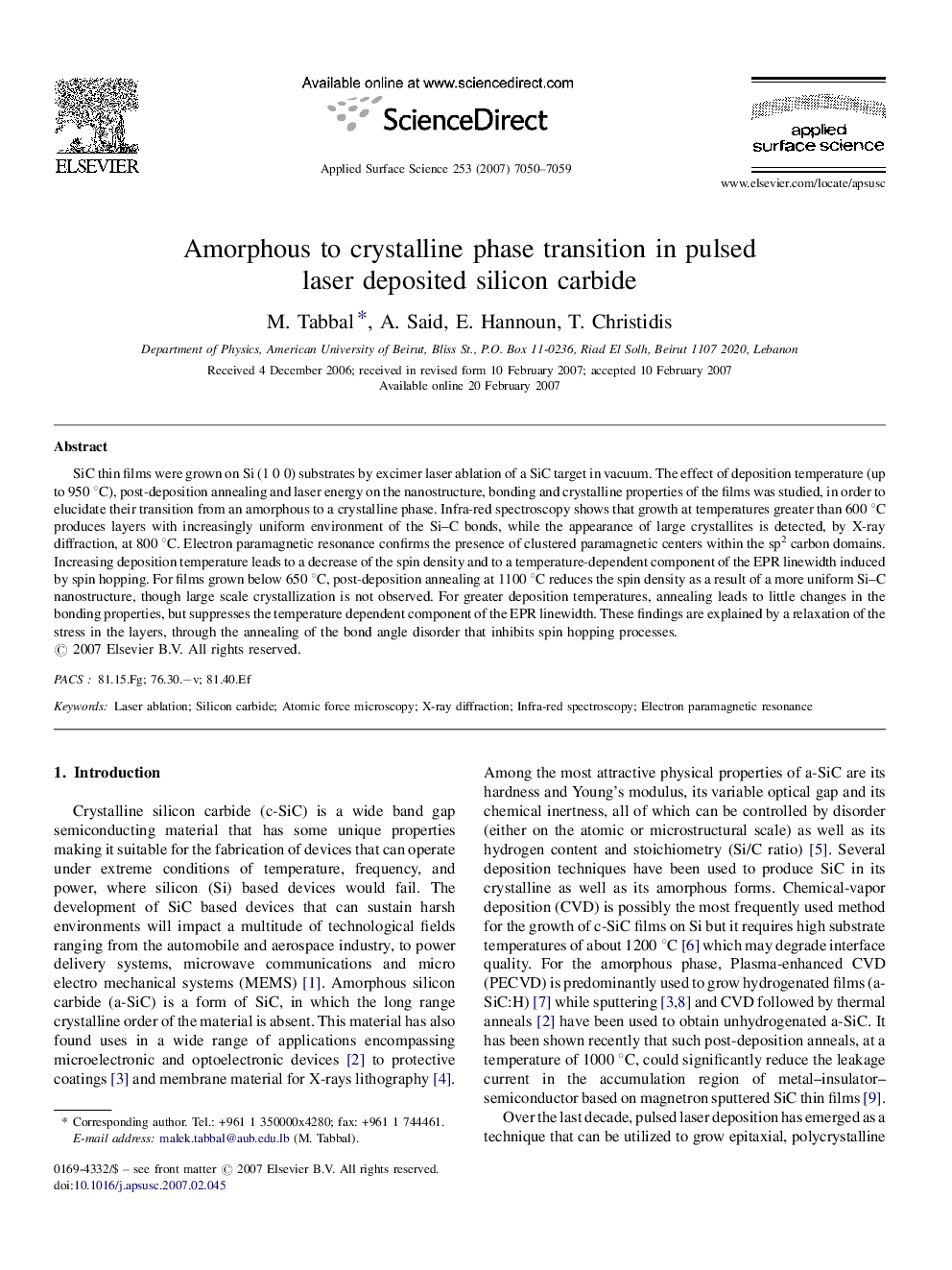| Article ID | Journal | Published Year | Pages | File Type |
|---|---|---|---|---|
| 5368416 | Applied Surface Science | 2007 | 10 Pages |
Abstract
SiC thin films were grown on Si (1 0 0) substrates by excimer laser ablation of a SiC target in vacuum. The effect of deposition temperature (up to 950 °C), post-deposition annealing and laser energy on the nanostructure, bonding and crystalline properties of the films was studied, in order to elucidate their transition from an amorphous to a crystalline phase. Infra-red spectroscopy shows that growth at temperatures greater than 600 °C produces layers with increasingly uniform environment of the Si-C bonds, while the appearance of large crystallites is detected, by X-ray diffraction, at 800 °C. Electron paramagnetic resonance confirms the presence of clustered paramagnetic centers within the sp2 carbon domains. Increasing deposition temperature leads to a decrease of the spin density and to a temperature-dependent component of the EPR linewidth induced by spin hopping. For films grown below 650 °C, post-deposition annealing at 1100 °C reduces the spin density as a result of a more uniform Si-C nanostructure, though large scale crystallization is not observed. For greater deposition temperatures, annealing leads to little changes in the bonding properties, but suppresses the temperature dependent component of the EPR linewidth. These findings are explained by a relaxation of the stress in the layers, through the annealing of the bond angle disorder that inhibits spin hopping processes.
Keywords
Related Topics
Physical Sciences and Engineering
Chemistry
Physical and Theoretical Chemistry
Authors
M. Tabbal, A. Said, E. Hannoun, T. Christidis,
